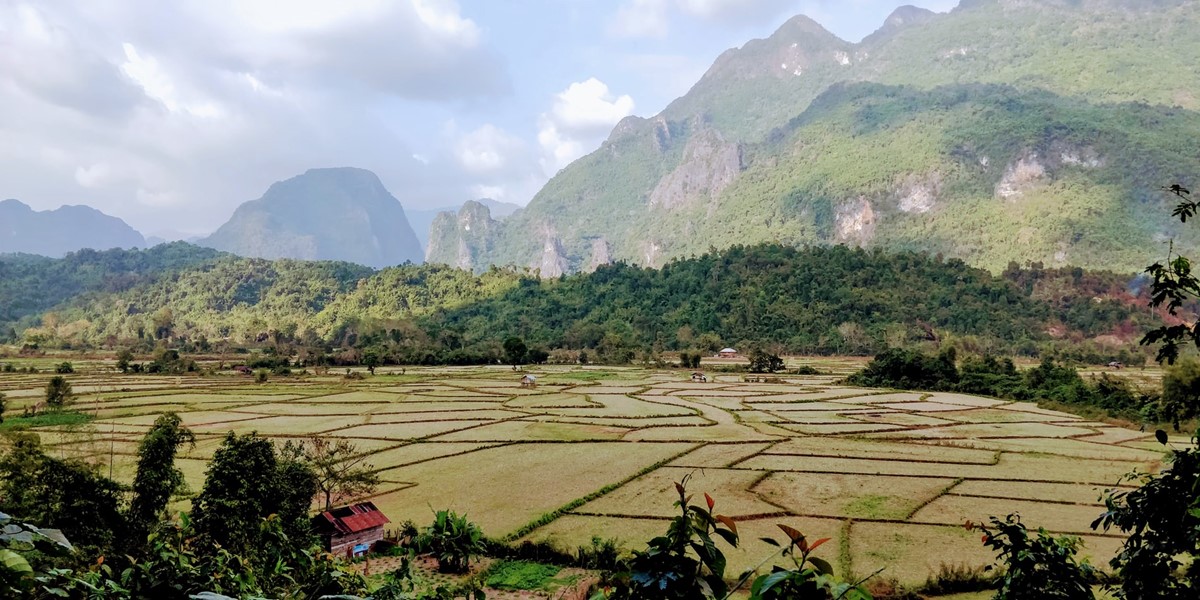Gino Delaere is master in Applied Economics (University of Antwerp) and holds an MBA (Xavier Institute of Management in Bhubaneswar, India). For over two decades he has been specializing in emerging markets worldwide and traveling the world looking for interesting investment opportunities. Previously he worked for several large asset managers where he was actively involved in several thematically inspired equity funds. He joined Econopolis in 2010 and in his current role he is co-responsible for managing the emerging markets and climate funds.
Emerging Market in the picture: Laos

Often overlooked in favour or its better-known neighbours, landlocked Laos remains one of Southeast Asia’s most enchanting destinations. Caught in the middle of the two Indochina wars and long isolated from the rest of the world, the country retains a slow, rustic charm, and its people -incredibly laidback and friendly- are undoubtedly one of the highlights of any visit. I was recently traveling throughout Laos and I can only recommend it. From Luang Prabang to the far north, its capital Vientiane and finally the far south, Laos is still somewhat different from most other Asian countries.
Silk Roads
However in recent years some things have started to change. As you know, China is aiming to build trade and infrastructure networks, thereby connecting Asia with Europe and Africa on and beyond the ancient Silk Road routes. This is what is called China’s “Belt and Road Initiative (BRI)”.

One of the core projects in this BRI seems to be the China-Indochina Economic Corridor. This entails a 420km long high-speed railway connecting Kunming, in Yunnan Province, to the Lao capital Vientiane and then, further on down the road, bound to unite mainland Southeast Asia, eventually all the way to Singapore. When it comes to the participation of Laos in this mega project, one hears all sorts of numbers. The Lao Ministry of Public Works and Transport says this: the Kunming-Vientiane high-speed railway started in 2016 and will be completed in 2021 and it will feature 71 tunnels and 170 bridges.
The whole project will cost $5,8 billion. Laos will only foot the bill for 30% of the project’s funding, with China covering the rest. However, Laos has to put up $720 million immediately, $250 million of which will come from the next five years’ budgets. Chinese loans at low interest rates will fund the remainder of Laos’s share of the costs. According to the Center for Global Development, Laos will pay back the $465 borrowed from China’s Exim bank at an interest rate of 2.3%, with a five-year grace period and a 25-year maturity. This is in the lower range of what China charges. Pakistan, for example, pays up to 5% interest on its loans.

Linking countries
For the Laos Communist government, the rail line is part of a strategy to make the country “land-linked” instead of landlocked as it is today. They believe they might over time be able to rebrand Laos as a regional transport hub, being an integral part of this north-south connection. That may be true, but we all know that once the railway is there, the Chinese will be there in even bigger numbers than they already are today. It will not be the first time. And the Lao private sector is much less competitive compared to their Chinese counterparts, so the question remains how much benefits there will be for the people of Laos.
Still, once completed, the railway will reduce transportation costs, stimulate the development of agricultural and industrial sectors, investment and trade, as well as generate income for some Lao people and the country.
Another likely beneficiary should be tourism. While I was there, I read plenty of articles about local travel guides trying to collaborate more and form partnerships with Chinese agents to bring more Chinese tourists to Laos. In 2018 Laos attracted 4,1 million tourists. Of this number, more than 800.000 visitors were from China, a rise of 26% compared to 2017. When we compare with 2014, there were only 400.000 Chinese tourists visiting Laos. So the growth is high and there’s a lot of potential left. Let’s just hope they won’t build another casino.
Without doubt, carrying passengers and cargo at maximum speeds of 160 km/h and 120 km/h respectively through northern Laos, the China-Laos railway will significantly change the physical, economic and social landscape of a country that has never seen any substantive railway infrastructure in its history.

Rapid changes
All that glitters is not gold. Some studies have shown that, when it comes to economic implications (projected benefits as well as economic risks, particularly associated with debt burdens), procurement arrangements, labour issues and finally environmental and social standards, the Chinese government’s approach as the financier and majority owner of the project falls short of what one would hope to see when it comes to delivering sustainable benefits to the people of Laos. Some even refer to the Lao railway as a Chinese infrastructure project that happens to be located in another country.
The economic case for a regional rail network certainly appears to make sense for the larger markets within the six-country program, no more so than for China of course. But will it make sense for Laos itself? As a regional project, the net benefits may be significant. But the bigger danger is that the distribution of those benefits could very well leave some of the smaller countries like Laos shortchanged.
Where is the money
On a wide stretch of the Mekong River flanked by thick forest, just north of Luang Prabang, I witnessed the construction of one of the first of two bridges over the Mekong being built (see pictures). But construction has displaced many local communities, leaving them with no means of supporting themselves. The government has requisitioned a large chunk of land, but compensation has been a problem. The vast majority of the families negatively affected by the project, apparently have not been compensated yet. For many, the compensation amount hasn’t even been determined yet, but their land has already been taken away.
To make matters worse, the vice minister at the Lao Ministry of Public Works and Transport has said that the government has already spent the money it set aside for compensation. So they’ll have to borrow more money from China in order to finish the compensation process.

The future
China’s Belt and Road Initiative (BRI) is still work in progress. However, this multi-billion dollar project already impacts economically and strategically on all participating regions and countries. Southeast Asia is particularly affected, as both the land-based and the maritime Silk Road pass through the region. For a relatively small and landlocked country like Laos, it remains to be seen how many benefits from the project will go the the Laotian people. Still, from a regional perspective, once completed, the railway will facilitate and reduce costs of transportation, stimulate the development of agricultural and industrial sectors, tourism, investment and trade, as well as generate income for Lao people and the country.
